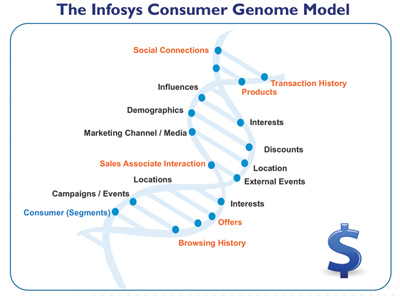Successful New Product Launch
 The head of sales of an emerging market at a large snacks major recently told me, “if only I could get more timely visibility to my new product launches, I could have done something. If nothing, I would have cut losses sooner”.
The head of sales of an emerging market at a large snacks major recently told me, “if only I could get more timely visibility to my new product launches, I could have done something. If nothing, I would have cut losses sooner”. There is no dearth of statistics to prove that new product launches are beset with huge challenges, and most fail despite having the right product and huge investments to support the launch. Like a newborn baby, a successful launch needs close handholding.
INDUCING TRIAL: A recent Catalina report revealed that just 1.5 percent of shoppers decide the success of a new CPG product in the CPG industry. Traditional approaches of ad breaks, in-store signage and in-store sampling remain important to establishing brand relevance. However, capitalizing on every opportunity to build consumer and shopper advocacy is critical.
A large alcoholic beverage major is leveraging the Infosys Consumer Genome Project to target consumers with context-specific messages depending on their profile, location, community, conversations and lifetime events.
With many potential avenues for engagement, it boils down to communicating with consumers based on their context, which is key to inducing trial.
 ENSURING REPEAT: Consumer engagement and media investments are of no use if the in-store experience is not optimal. Enough has been said about the need for a DSR as a means of providing timely visibility. However, what really matters is understanding how to leverage the information to make a difference at the shelf in time.
ENSURING REPEAT: Consumer engagement and media investments are of no use if the in-store experience is not optimal. Enough has been said about the need for a DSR as a means of providing timely visibility. However, what really matters is understanding how to leverage the information to make a difference at the shelf in time. - Holistic listening: While traditional DSRs give the ability to access and analyze POS data in a timely manner, it is equally important to mine consumer feedback. A recent book, “Bricks Matter”, cites an example of how Newell Rubbermaid took corrective action on product-usage guidelines to address consumer concerns on Produce Saver. Mining product reviews across multiple channels of consumer interaction is critical to gaining timely insights.
- Improving retail execution: All of the insights are of little value if one is not able to drive change at the point of purchase. Progress in mobility and imaging technologies helps get visibility to in-store performance and planogram compliance. It is critical that enhanced information is leveraged to ensure that the right activities are given the appropriate amount of focus in the store. A large CPG company has been able to realize more than $30 million in incremental sales due to better execution based on this capability.
- Supporting in-market experimentation: In addition to on-shelf availability, product placement is also very critical. In-store experimentation is a very useful means of understanding shopper traffic patterns, shelf dwell times and product location efficacy. A large CPG major is using the Infosys Trade Edge solution to combine the traditional DSR with in-store data collected by sensors to draw insights to make changes in product placement.
RESULTS MATTER: Several leading CPG companies are establishing capabilities to manage new product introduction as a core initiative enabled with the right tools and technologies. But not everything may be optimal and integrated on day one. What matters is having a new product introduction focus team making things happen with pragmatic solutions to be able to make the most of interactions at the moments of truth.

